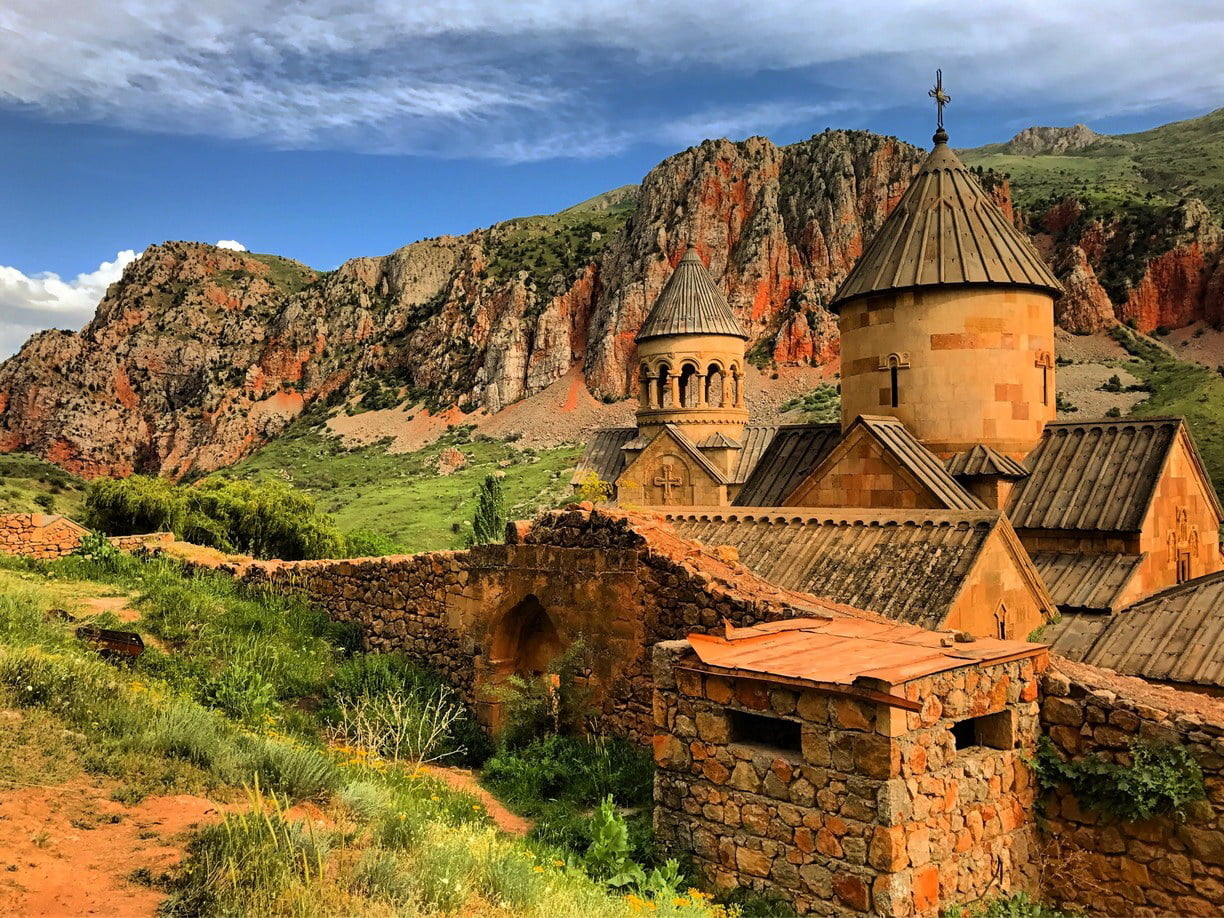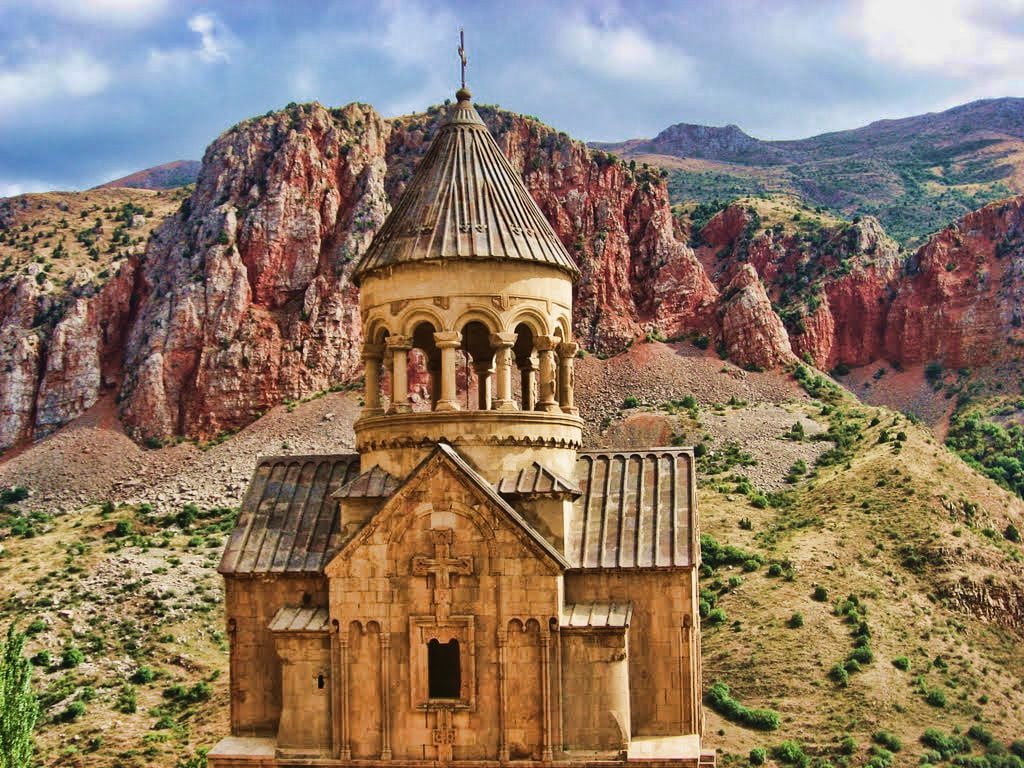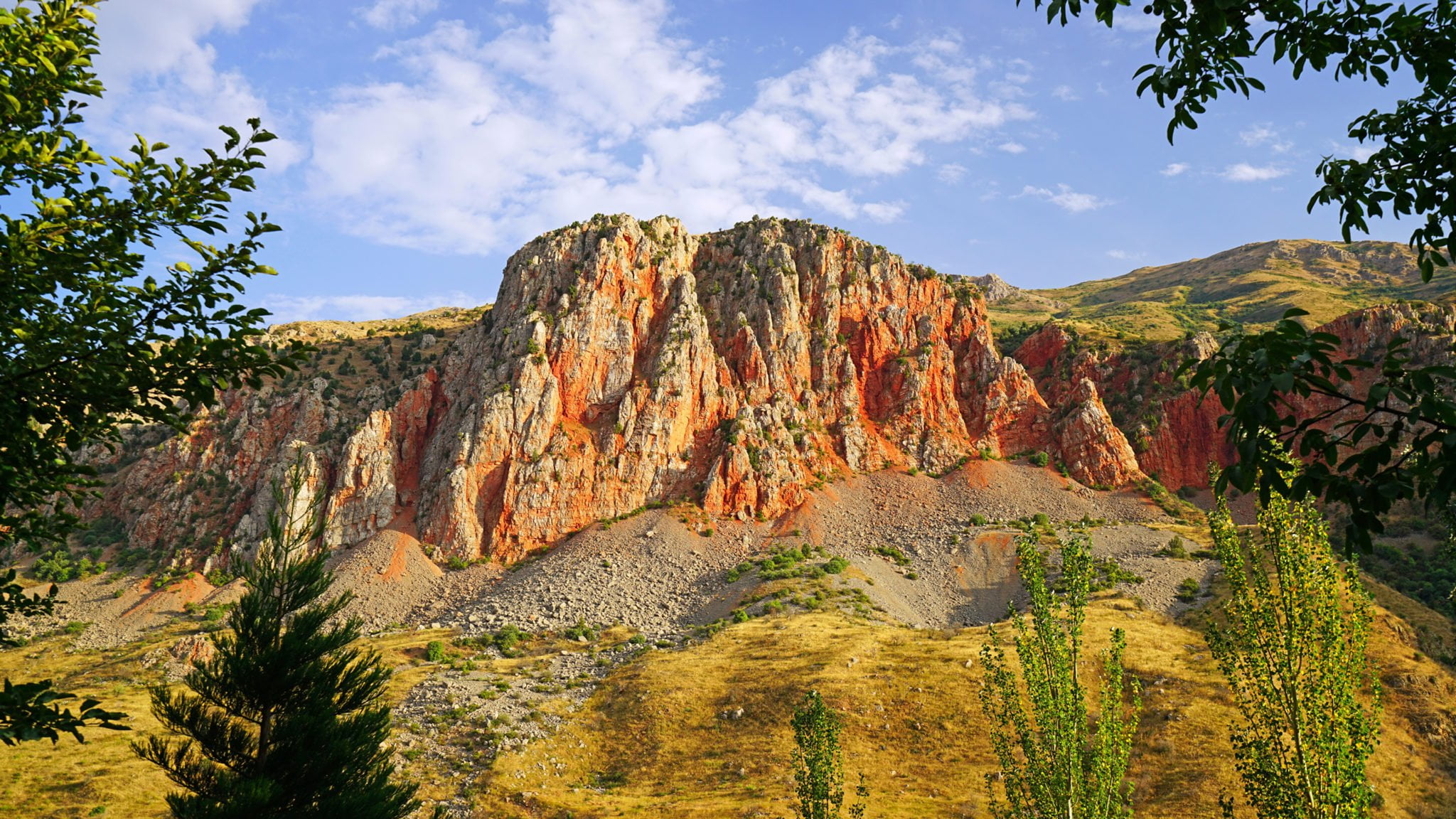Noravank Monastery, Armenia- “New Monastery”
The name of the monastery is literally translated as “new monastery” (“Nor” – new, “vank” – monastery), but today the name of the monastery does not correspond to the reality: Noravank was built 13 centuries ago! The monastery stands majestically in the gorge of the river Arpa, and in the gorge, makes the view even more impressive. The exceptionally magnificent landscape surrounding the two ancient churches and the chapel attracts tourists from all over the world. A pleasant bonus for guests is that the monastery is located on the road to other sights of Armenia, and travel companies offer interesting and optimal packages of sightseeing tours to Noravank, which may also include visits to Tatev Monastery, Karahunj, Khor Virap, etc.

Noravank on the background of the red gorge
Noravank history
Noravank was built by the Bishop of Vahanavank Hovhannes in the 12th century, in 1205, on the site of earlier churches, then the monastery was completed in the 13-14 centuries. Hovhannes gathered monks, expanded the territory of the monastery, and gained an order from the Seljuk rulers to recognize Noravank as an Episcopal church. The history of the monastery is associated with the names of famous church and political figures of Armenia, who lived and worked in Noravank, prominent figures and creators are also buried here.
In the next two centuries, Noravank expanded and developed thanks to the enlightening activities of the Orbelian family, who ruled in Syunik. As a result, Noravank became an educational and cultural centre, then a tribal cemetery of Orbelian.
In 1238 the monastery was robbed and defeated by the Mongols, but peace was concluded between Aga Khan and Elikum Orbelyan, which made possible the restoration of the monastery and contributed to its further development and prosperity until the next invasions – the invasions of Tamerlan in Armenia in the 14th century.

Architect Momik
The history and architecture of Noravank are closely connected with the name of the medieval Armenian architect, sculptor, illustrator Momik. Momik began working as a sculptor in Kilikia, where he became acquainted with the late Gothic style of the Crusaders.
Momik is the architect and sculptor of the church of St. Virgin (1321) in Areni. Its elegant pavilions adorn the entrance of the Noravank monastery. The khachkars that Momik made were set up in the complex Noravank as it was in the church of St. Virgin in Areni. These khachkars are still unique in their kind with their artistic and stylistic decisions.
The last works of Momik are the two-storied Surb Astvatsatsin (Bourtalashen) mausoleum church located in the southeastern part of the Noravank complex, two small bas-reliefs, and the western and southern walls of the church, as well as a small, simple khachkar in the southern part of the building, which was made in memory of Momik himself.

What to see in Noravank?
Noravank is famous for the fact that the church is a two-storeyed, and you should climb very narrow stone steps along the wall of the church: not everyone dares to climb these steps. Above the entrance to the church, you will also notice the bas-reliefs made by architect Momik, which depict the Virgin and the Child, the archangels and the apostles Peter and Paul. The complex of Noravank also includes the Church of St. Stepanos Nakhavka, located to the west of her porch, the church of St. Grigor (mausoleum of Stepanos Orbelian), the medieval chapel and the newly built monastery hotel – Vanatun.

Red Gorge, Noravank
How to Get to Noravank?
The monastery of Noravank is located near the city of Yeghegnadzor. The distance between Noravank and Yerevan is 117 km, and the distance between Noravank and Yeghegnadzor is 21.5 km, a 15-20-minute drive.
Noravank opening hours
Noravank complex is open 24 hours a day. You will not need an entrance ticket. There is only a parking fee on the territory of the monastery – 200 drams.
